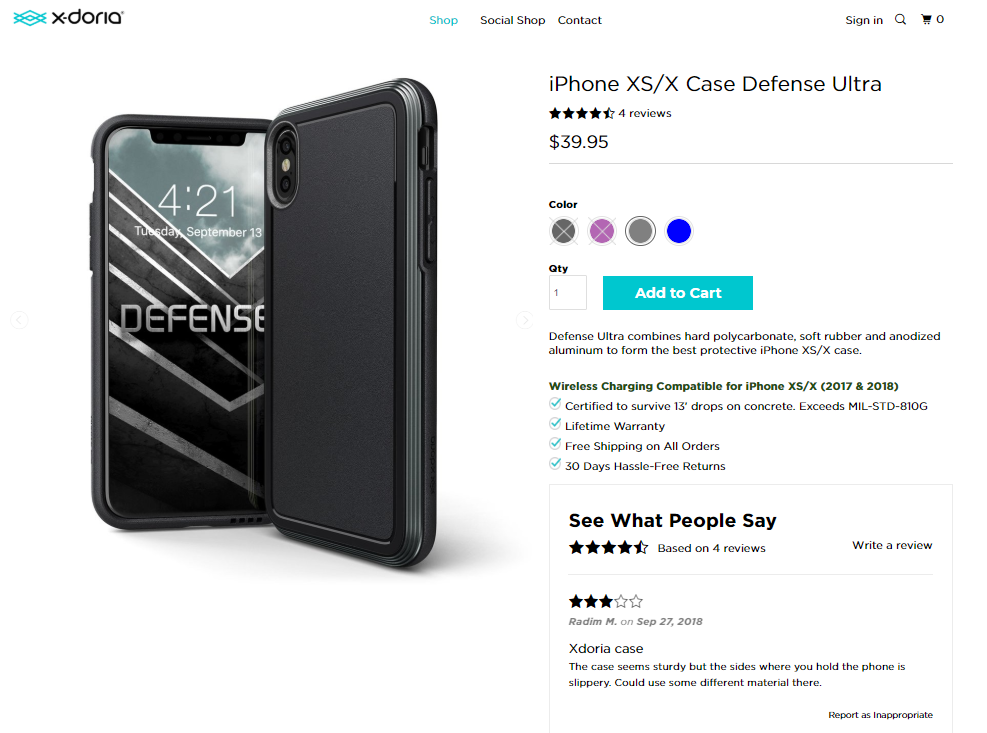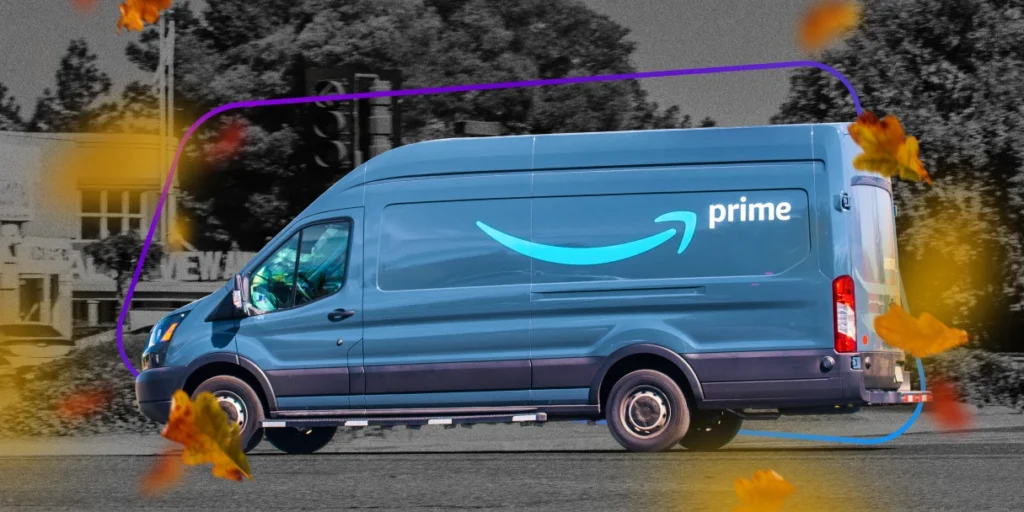As an online retailer, your product descriptions can make or break your business. Sure, great photos are important. But unless they’re paired with descriptions that both adequately explain the product and simultaneously persuade a customer to buy it, then even a million-dollar photographer can’t save you.
The Key to Writing Great Product Descriptions
Too many brands think product descriptions only need to cover the basics — what the product is, what it does and how to use it. While these are all important details to include, they shouldn’t make up the entirety of your description, at least not if you want to elicit sales.
Truly great product descriptions do so much more than just describe a product. They also tell a story, present a solution, convey a feeling and sell a lifestyle. They persuade, convince and connect. They relate and appeal to the customer.
In the following article, we will focus on how to improve conversions based on optimization efforts to your product descriptions.
We’ve also included a very important note on the value of SEO because if shoppers can’t find your product (via the search results), what good is a well-optimized product description?
6 Tips for Writing Better Product Descriptions
Take a look at your product descriptions. Do they simply describe your products, or do they actually sell them and persuade buyers to purchase them? If you can’t confidently say the latter, then it’s time to give those descriptions a makeover.
Keep these tips in mind when you do:
1. Know your target audience.
Though it can be tempting to keep your descriptions bland in order to appeal to most people, this actually does the opposite. No one wants to buy boring, vague or non-specific products. They want something exciting and powerful.
When writing a product description, have an exact target customer in mind. Give this person a name, a job, a salary and interests. Then, write the description with their unique life in mind.

Address them personally with “you” and “your.” You can even use slang or phrases they might use to make it more conversational and relatable.
2. Don’t cut corners.
Great product descriptions are unique and one of a kind. They don’t come from a cookie-cutter product description generator or $5-dollar writer on Fiverr.
Sure, it can be costly to hire a professional copywriter, but if you don’t have one in-house or you’re not a great writer yourself, it is well worth the investment in the long run.
Choose an experienced, vetted copywriter for the job, and the work they provide should more than cover for their fee in the long run.
3. Sell the benefits.
Don’t just include the specs, features, and functions of your products. Use your descriptions to highlight the benefits of them, too.
What value do they bring? What problems or challenges do they solve? What’s fun or enjoyable about them? Ultimately, what’s in it for the customer?
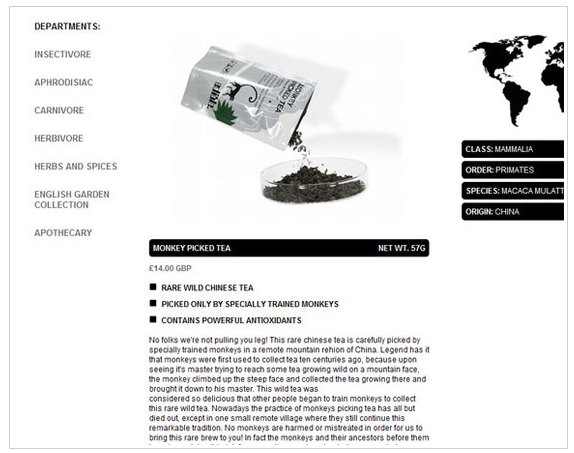
4. Avoid using filler words.
Claiming your product is “best in class,” “the most advanced” or of “proven quality” doesn’t really tell customers anything of value. Rather than using superlatives, use stats, data and social proof to prove your point.
- Instead of saying “the industry’s best golf club,” how about “Voted the No. 1 golf club by Golfer’s Magazine readers?”
- Or instead of “the market’s most advanced smoke alarm system,” something like “proven 50% more effective than other leading brands.”
If your product is truly the best or most advanced, you should be able to back it up with cold, hard evidence — rather than just saying it.
5. Tell a story.
Don’t just talk about your product in a vacuum. Use your description to weave a story and present a potential scenario for the customer.
Selling grill tools? How about something like:
Tired of letting Uncle Bob play grill master every family cookout? Don’t sit on the sidelines next July 4th. Get on those barbecue front lines with these handy grill tools. Used by proven chefs like Bobby Flay and Guy Fieri, they’re your key to BBQ bragging rights.
Or, how about this ModCloth “Work to Play” Dress, where the copy clearly appeals to the busy woman on-the-go (from her daytime job to dinner with friends).
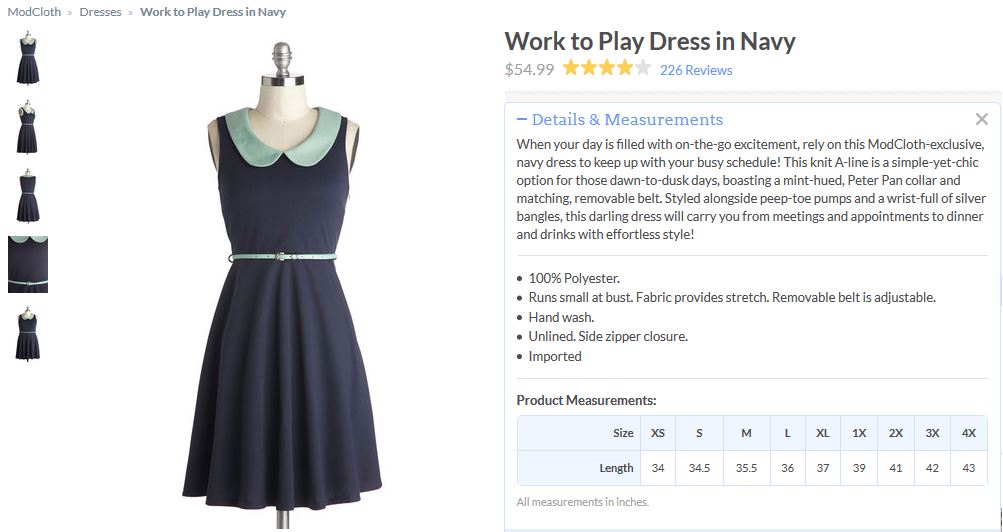
6. Don’t forget to optimize your product pages
As we mentioned earlier, SEO plays a significant role in driving traffic to your product pages. Product pages are not only your source for conversions, but they can also be an important source for attracting new customers.
Beyond your product descriptions, brands should also optimize product pages to help your domain rank for more product keywords, improve click-through rates, and time spent on your website.
All of your product pages should include:
- Title tag modifiers: Additional keywords used by your audience that can sell or differentiate your product. “Chrono,” “white caramel,” and “leather” are all modifiers (and keywords) that boost this product page below:
- Include content on your product pages:
- A keyword-rich product description
- Optimized product images with alt tags
- Customer reviews and testimonials

Source: X-Doria
For Amazon Sellers: How do I optimize product descriptions?
As it’s own marketplace, Amazon’s SEO (A9 Algorithm) operates differently than from other search engines.
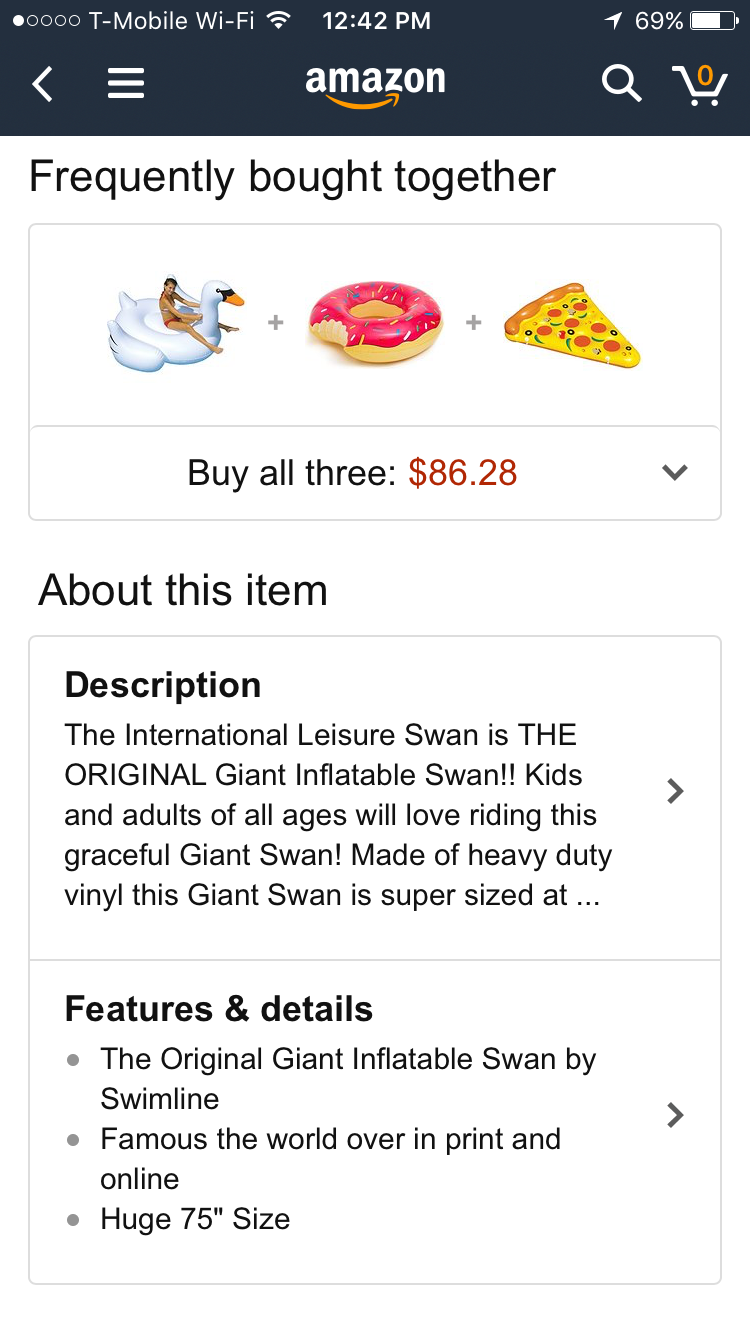
Amazon Product descriptions are typically a few paragraphs long, and they may require some light HTML. If you’re selling products in a category that Amazon regulates, make sure you read all requirements before your listing gets taken down for using the wrong terms.

Every product detail page should also describe the major product features, such as size, style, and what the product can be used for. Amazon encourages sellers to include accurate dimensions, care instructions, and warranty information and use correct grammar, punctuation, and complete sentences.
Do not include any of the following types of information:
- Seller name
- E-mail address
- Website URL
- Company-specific information
- Details about another product that you sell
- Promotional language such as “SALE” or “free shipping”
Try using light HTML to better split up paragraphs and bold certain important words or phrases.

“While Amazon’s search engine is important for shopper conversions, Google is still the number one organic search engine. The biggest advantage brands get when they optimize their website to rank organically is the ability to engage shoppers at every point in their journey to purchase.”

-Leanna Kelly, Growth Marketing Manager, Web & SEO at CPC Strategy
Need more help writing product descriptions? Check out our list of resources below or email [email protected].
The Ultimate Ecommerce SEO Checklist for Brands in 2019
The Ultimate Guide to Amazon SEO & Cracking the A9 Algorithm
You Might Be Interested In



